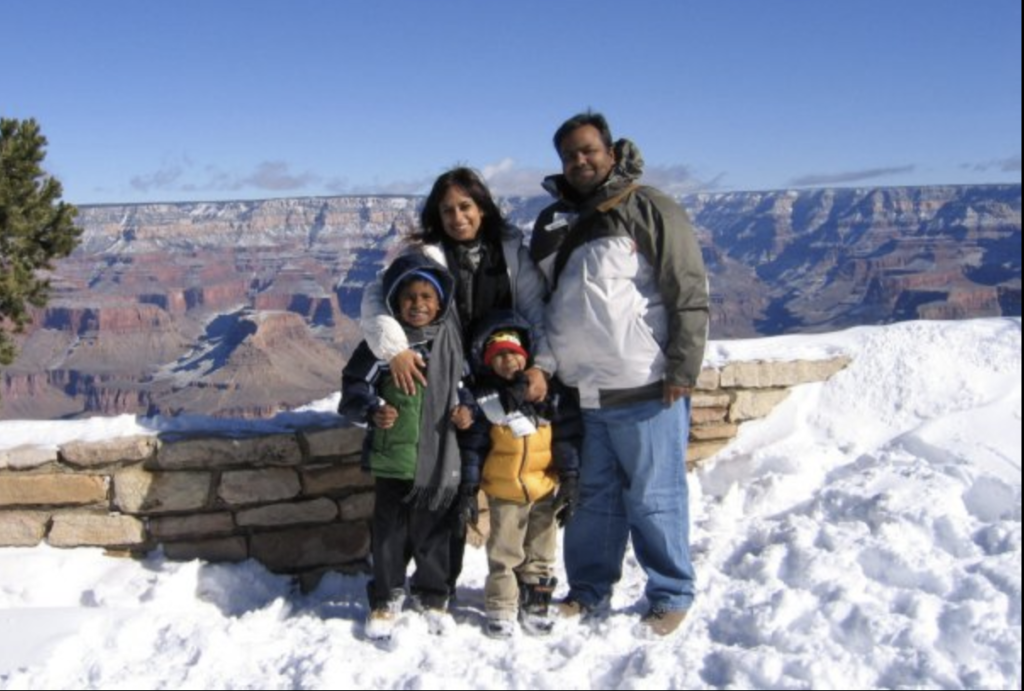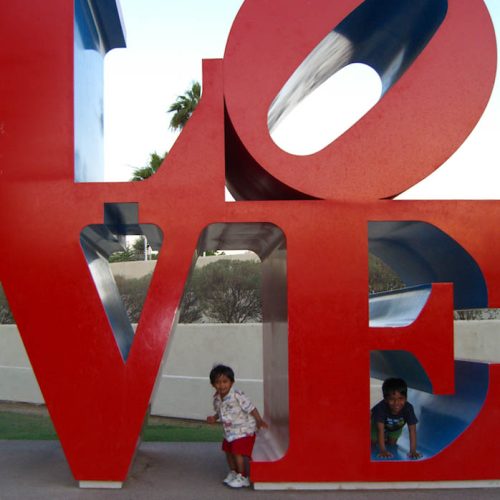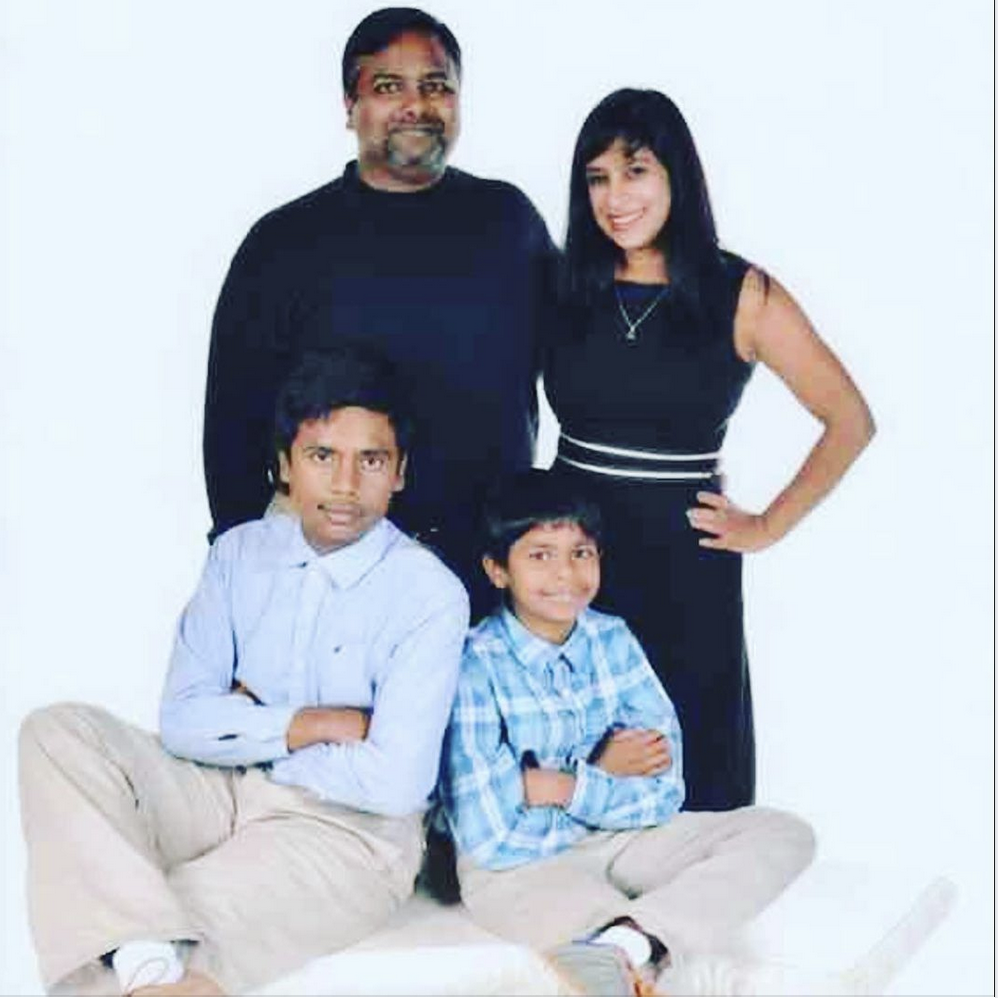
In the cycle of life and death, the creation of new life is a symbol of hope and happiness. While it is expected of human beings to procreate and give birth to progeny, this regular phenomenon is a very different experience for each woman. Some have everything go according to plan whereas some face many unexpected challenges. It is these challenges that teach us important lessons in life and help us emerge wiser than we were before.
My first son is a survivor of the Neonatal Intensive Care Unit. My second son survived open-heart surgery and the Pediatric Intensive Care Unit. This essay is an inspiration to all the people in the world who have struggled hard to get what they believe they should have and derived wisdom from enduring difficulties. This is also a tribute to all those wonderful people who have the gift of empathy and understanding and use those qualities to help those who are in dire need of it.
Raghav
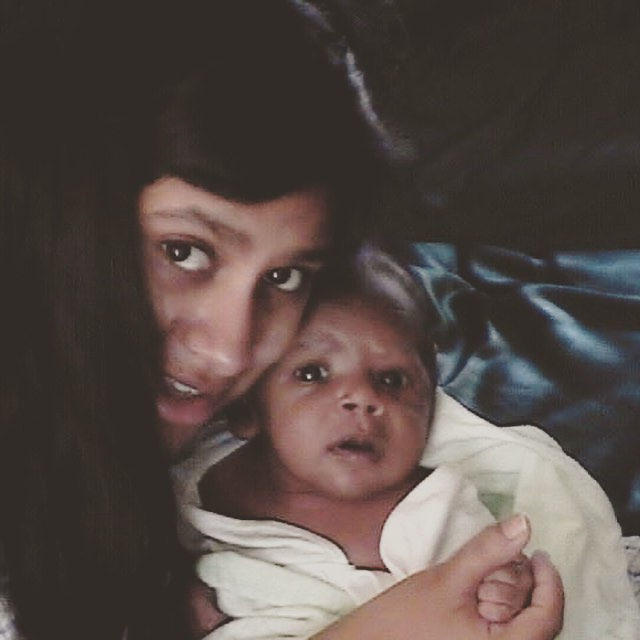
My first son was born one week after his due date. After thirty-six hours of induced labor and only seven centimeter dilation of the cervix, I was told that I must have a C-section because the baby was under stress. How could a perfect pregnancy take such a turn? Mine was a blissful pregnancy, completely devoid of morning sickness or any other complications. Since I had not anticipated any problems, I took a short maternity leave. I was a Bioinformatics Computer Programmer which was an important part of my identity. Little did I know that childbirth would change my identity forever.
The induced labor was unsuccessful and so stressful that my son had aspirated a significant amount of meconium, so much that he could have become brain-damaged. After he was born, they showed me his face before they whisked him away from me and tried to clear his lungs. I did not get a chance to hold my son. The pain welled up in my heart. I did not know what was happening, but I could not breathe and was gasping for air. The anesthesiologist brought over an oxygen mask but I pushed it away.
“Please tell me how I can help you,” he asked. “I can’t breathe,” I said, looking him straight in the eye. He gave me some medication to calm me down. I saw tears in his eyes as he looked at my son and me, both struggling to breathe. My son was struggling due to the residue in his lungs, and I, for fear that something was wrong. The very deep physical bond which I had been sharing with my son for nine months caused my body to ache in the same way that his did.
As I was shivering violently in the recovery room, I was told that my son was sent to the Neonatal Intensive Care Unit; we did not know if he would survive, but I still could not give up on hope. I was allowed to stay at the hospital for four days during which I visited my son frequently. His tiny little eyes lit up every time he saw me. He was on a respirator, which covered most of his face, but I could still see his excitement every time I came near him. Alone in my room I tried to pump out milk for him. I kept telling myself that he would recover. My husband, who was grief stricken as well, tried to prepare me for the worst. However, does the heart of a mother ever give up? I could not let negative thoughts enter my mind.
The dreaded day finally came when I had to go home with a heavy heart and no baby. I wished that I could be like other mothers and be overjoyed at the thought of going home with a baby. Alas, I was rescued by a phone call. After I had barely crossed the threshold of my home, the phone started ringing. It was my father in India, anxious about Raghav. I broke down. My father thought that I had lost the baby. He called out to me in exasperation, “Kirti?! Kirti!!”. “He’s not happy,” I managed to say as I was shaking uncontrollably between sobs. My father was relieved to hear that the baby was alive as he already knew that his left lung was damaged. He said very gently, “How can he be happy, Beta (my child)? His lung is damaged.” I started sobbing louder at the thought of my son being so ill. My father mentioned a special prayer to me, but I was so overwhelmed with grief that I could not focus on what he was saying.
After our conversation was over, I went upstairs and looked at my baby’s empty crib. A very deep pain settled into my heart. For the very first time in nine months he was sleeping away from me. Every time I closed my eyes, I saw his face. I needed to derive some strength from my father. In an attempt to pull myself together, I called him and he understood why I had called. At that moment, on a long distance call which spanned across the continents, my father recited the prayer to me. I wrote it down as he explained it to me. After I hung up, I knew what I had to do.
I meditated on the prayer, repeating it many times, and I felt an enormous weight lift off of my shoulders even though I still felt a void inside of me. I took the little stuffed toy that belonged to my son and held it close to my heart, as if that were my baby and went to sleep. Raghav’s respirator came off after a day. The next couple of weeks I went to see my son many times a day. The lactation consultant sat with me for two hours and helped me feed him. We did it and I was so happy to finally be a normal mother. My prayers were answered.
Dhruv
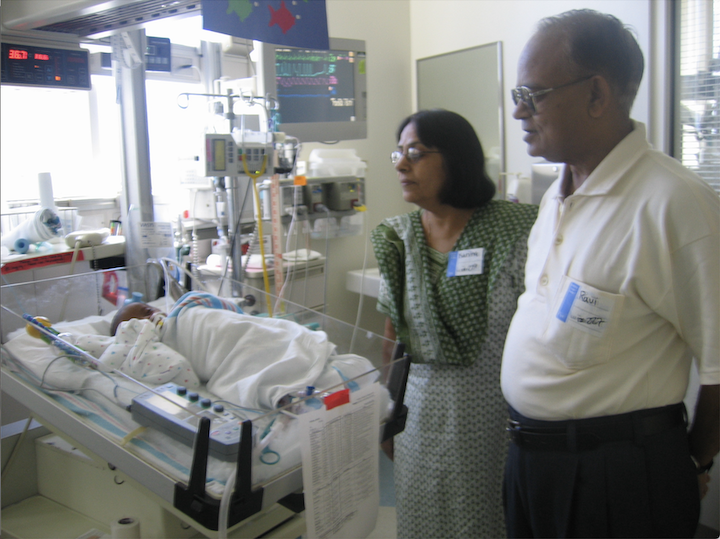
My second son was born after a C-section. I was so pleased to have a baby that was perfect in every way. I was able to feed him immediately. The thought of being able to go home with my baby filled my heart with joy. I wanted it so badly.
Six weeks later, I noticed that Dhruv, who was so fond of breast-feeding, was not feeding well. He started breathing very deeply, I panicked and took him to the ER; this trip to the ER shook my entire being. After several tests were taken, we found out that his oxygen saturation was only 70% and he was immediately admitted to the hospital. I sat there with my baby cradled in my arms wondering what was wrong with him. I brought him to the ER thinking that he was coming down with a severe cold and was having difficulty breathing. After his chest X-ray was taken the doctor looked at me sympathetically; I recognized the look in his eyes and was instantly gripped with fear.
I tried to brace myself, but what he said caught me completely off guard. “We think there is something wrong with his heart,” he said. I felt my heart jump into my throat. My head started to pound and I could not hear anything he said after that. I looked at my baby’s face and thought, “How could something be wrong with his heart? He was such a good baby, so perfect.”
I wanted to take my baby and run, as if the hospital had created this problem. I looked at the doctor and my mouth became dry. This wasn’t a nightmare or a mistake, this was really happening. “Was he born that way?” I asked, feeling defeated and perplexed at the same time with tears welling up in my eyes. “We think so, but we’ll find out.” After several more tests, I was told that he had a congenital heart defect called Total Anomalous Pulmonary Venous Return, which is very difficult to detect, but could be surgically repaired. He said they were getting ready to send him to the ICU in a more advanced facility. At the sound of the word “ICU” my head started spinning, “Could this be happening to me again? Why does this always happen to me?”
An ambulance took us to the new facility, which was much larger than the previous. Here, I could stay with my baby all the time; from then on I slept in the ICU. The cardiac surgeon told me that the prognosis was only 80%. I felt my heart sink. My attention hung on every word he uttered. This was the man who could save my son.
He looked puzzled after I told him that we did not have any history of this problem in our family. I looked at him beseechingly. He asked me if it was my idea to bring him to the ER, and I answered in the affirmative. He congratulated me on being a good mother, but all I wanted to hear was that my son would survive. I wanted to get down on my knees and beg him to save my child as if he were God. After he left, I ran to the closest place of worship and said the same prayer that my father taught me when my older son was sick. My parents rushed from India to be with me.
As I walked towards the operation theater with my son on a stretcher I was nervous and anxious; I was fighting an internal battle. The nurse could sense my emotions and asked me if I wanted to kiss my son before he went inside. A twang of pain pierced my heart as I realized that this could be the last time that I see him. Once again, I decided not to let negative thoughts enter my mind. It was my positive thoughts that would help him survive. I kissed him on the forehead with the deep resolve in my heart that he would be back. I looked at his face and said, “Bye sweetie, be strong…” as my voice cracked and I tried to muster up my own strength. I watched them take him inside.
My heart sent him a silent message, “I love you, please come back for me.”
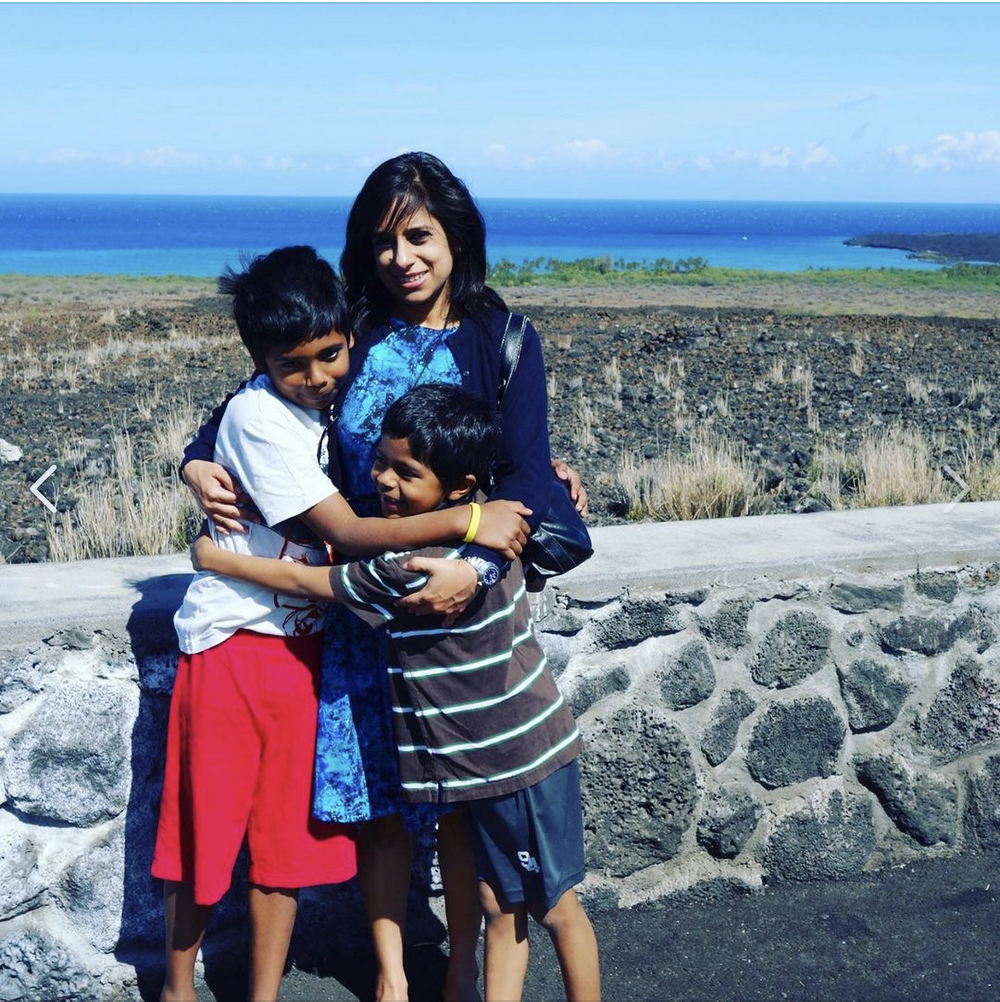
The few hours which I spent in the waiting room brought about a paradigm shift. “Tick, tick, tick… ” said the clock. Sitting cross-legged, I tried to focus on my special prayer from my father. I was interrupted by the opening of the waiting room door. My eyes met with those of a woman whose face was fraught with anxiety like my own and we started talking. I told her my story and found out that she had eight children, four of whom were handicapped.
One of her children was having leg surgery which was why she was in the waiting room. I asked her how she managed to live such a difficult life. She looked at me understandingly and said that her handicapped children were a gift. I looked at her curiously after which she said, “Don’t get me wrong. I did not ask for four handicapped children, but now that I have them I understand that I was chosen to take care of them.”
Her invaluable words of wisdom sank deep into my psyche. From that moment on I began to view life differently. I ceased to see myself as the victim and started seeing myself as the chosen one. The person, chosen from above, who had to endure pain because I had the capability to endure it. The person, chosen from above, who had to emerge from that pain and become someone beautiful.
She asked me the meaning of my son’s name. “Perseverance,” I said before realizing how true he was to his name. “Perseverance,” she repeated and smiled at me. In order to meditate in isolation we moved to opposite sides of the room. I resumed my prayer feeling like a different person. Finally, the surgeon came in with a beaming face. The surgery was successful. We thanked him profusely. In my heart of hearts I also thanked the woman in the waiting room.
The next three weeks were very difficult; Dhruv had many more procedures performed on him and I will never forget the special people who helped me. Friends, who came to visit, were appalled at the number of medications that were going into his frail little body. They fed the milk I had pumped to him through a tube in his nose. My father’s moral support and my previous experience with the ICU made me stronger. I watched all the procedures performed on my son and discussed everything with the doctors. Recovery was a very long process, two steps forward and one step back. The day finally came when we could take him home.
Life, which is unpredictable, can present us with some very difficult challenges. When this happens we must not lose heart. We need to embrace these challenges with grace and allow them to transform our lives into something beautiful. We need to derive tenacity from our inner strength and fight through the difficulty with all of our might while never losing faith. It is this faith, the power of positive thinking, which will help us cope with anything and emerge wiser and more powerful than we ever were. The famous martial artist, Bruce Lee once said, “Do not pray for an easy life, pray for the strength to endure a difficult one.” It is these challenges that give us strength of character and provide depth to our personalities. Only with that depth accomplished, can we reach out to others in pain and comfort them.
